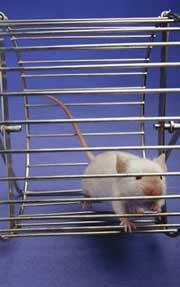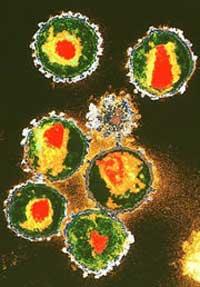AIDS can be investigated in the mouse

The researchers believed that the vaccine against Human Immunodeficiency Virus (HIV) would be obtained many years ago, especially because the virus was isolated shortly after identifying the disease. But they still cannot get the vaccine. The latest proven vaccine reduces the risk of virus infection by just 3.8%.
The failure is because the economic effort has not been enough; AIDS has had more researchers and economic resources than any other disease. Furthermore, the life cycle of the HIV virus is better known than that of any other virus. It should be noted that HIV is currently used as a model of virus research. And yet, the vaccine has not been obtained. In fact, two are the most obvious difficulties in getting the vaccine. On the one hand, the tendency of mutation of the virus greatly hinders the development of the vaccine. On the other hand, there is another factor that slows down the process: The HIV virus only infects humans and monkeys.

It must be taken into account that the greater the life of an animal species, the lower its usefulness in research. Scientists use cheap, easy, and fast growing species. In them, the development of the disease can be observed quickly and, therefore, to test the efficacy of drugs and vaccines more quickly. Hence, the mouse is one of the most appropriate species to investigate the diseases of mammals.
In the case of HIV, vaccines have inevitably been tested in monkeys. Now, however, virologist Yong-Hui Zheng and his team have managed to get mice also infected with the HIV virus. The incorporation into the mouse of a gene that appears in human lymphocytes and which encodes the hp32 protein has made available a new research system.
The researchers knew that for the virus to enter the cells of the mice, it is necessary for them to have certain receptors or receptors of human lymphocytes, that is, to know the proteins of the membrane of HIV. However, this has not been enough since the virus enters but the viral cycle cannot be completed. Unfinished copies of HIV genetic material were stored in the nucleus of mouse cells. However, when cells also synthesize hp32 proteins, they have seen that genes are able to replicate and form the virus cycle.

The mouse incorporation of the genes that encode these human proteins will allow testing the virus vaccines much faster than so far. Currently 7 new vaccines are being developed. So far all efforts have been left to zero and the virus continues to contaminate about 5 million people a year. But the use of mice will greatly facilitate the work of researchers. At least it will reduce the time needed to develop vaccines.
However, in mouse cells that encode hp32 the proliferation of the virus is 50 times slower than in human cells, so they consider that there may be some other human protein involved in the process. Now they work on finding this other protein to form the puzzle.
Buletina
Bidali zure helbide elektronikoa eta jaso asteroko buletina zure sarrera-ontzian











